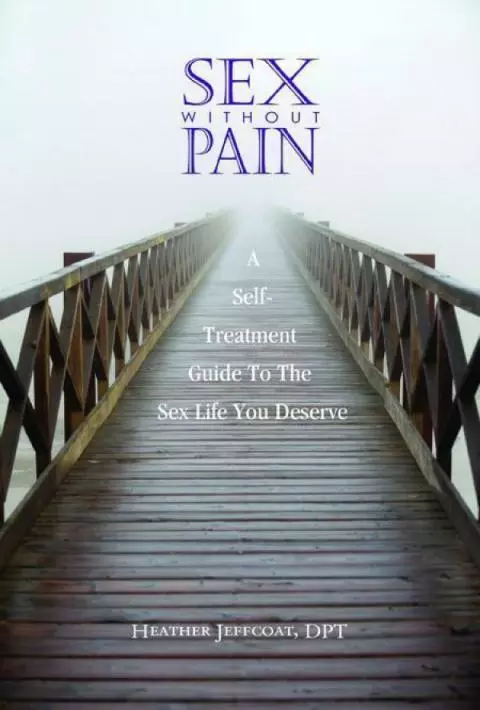Persistent Genital Arousal Disorder (PGAD) is a condition that is poorly understood.
Persistent Genital Arousal Disorder is a rare disorder most commonly seen in those with female anatomy and is characterized persistent sensations of genital arousal in the absence of sexual desire or stimulation. These sensations typically stay after orgasm and are intrusive, unwanted, and can negatively affect quality of life.
The diagnosis itself is not well known among healthcare practitioners yet alone the general public. Those who experience its symptoms can be hesitant to talk about it with their healthcare practitioners even though it may be affecting their quality of life.
PGAD is generally a disorder that affects those with female anatomy, but recent data published suggest that it may affect those with male anatomy as well (Stevenson & Kohler, 2015). The most overarching symptom is persistent arousal of the genitals to the point of it getting in the way of function, habits and routines.
September is Sexual Health Awareness Month - check out our blog feed for more articles to improve your sexual health saviness!
Prevalence, Misunderstanding, and Under-reporting
The prevalence of Persistent Genital Arousal Disorder in the population is still unknown, but it is believed to affect approximately 1% of women. Some researchers believe that many who have Persistent Genital Arousal Disorder do not report it, out of fear that they will have the social stigma of being hypersexual (Klifto & Dellon, 2019).
Diagnosis
Persistent Genital Arousal Disorder is generally diagnosed based on the following 5 criteria, but not all practitioners agree fully and there is no professional consensus (Klifto & Dellon, 2019):
- genitals are persistently aroused
- arousal remains following orgasm or requires multiple orgasms to diminish
- arousal is unrelated to desire
- arousal is triggered by both sexual and non-sexual stimuli
- symptoms are intrusive and unwelcomed
- male anatomy may experience sensations of arousal and ejaculation or orgasm without an erection
What Causes Persistent Genital Arousal Disorder?
The causes of PGAD can vary, which is why accurate diagnosis by a trained doctor is essential.
A thorough evaluation will include a detailed medical history, mental health history, medications, diet, risks of vascular/neurologic disorders, examination of the external genitalia, a pelvic exam and possible labs to look at hormone levels.
Imaging via pelvic ultrasound/doppler may also be used to rule out pelvic masses. Your doctor may also do neurological testing if they suspect any implications of the nervous system, including the pudendal nerve.
Depending on what is causing the Persistent Genital Arousal Disorder, treatment will look different and will often require a team of healthcare practitioners taking care of the mind and body.
Psychological/cognitive
If Persistent Genital Arousal Disorder symptoms are caused or exacerbated by stress and anxiety, therapy, particularly focused on cognitive-behavioral strategies and mindfulness are appropriate for treating Persistent Genital Arousal Disorder.
Neuropathic
When nerves are entrapped they might exacerbate Persistent Genital Arousal Disorder symptoms. If the nervous system is contributing to Persistent Genital Arousal Disorder, treatment may include medicines which would be prescribed by a doctor and modalities such therapeutic exercise, manual therapy, and modalities like transcutaneous nerve stimulation.
How Pelvic Floor Physical therapy Can Help
The treatment modalities you will receive in pelvic floor therapy for Persistent Genital Arousal Disorder will depend on what your care team has identified as the causes of the symptoms. For example, if your pelvic floor muscles are tight and causing nerve entrapment, the techniques used will focus on releasing the tension in the pelvic floor.
Some of the modalities used at Femina Physical Therapy can include (but are not limited to):
- Manual therapy including soft tissue massage, connective tissue manipulation, muscle energy techniques, and myofascial release to treat connective tissue dysfunction and myofascial trigger points
- Internal pelvic manual therapy to treat sensitive tissues, muscle spasms, trigger points, and muscle guarding that can cause issues like pain with sex, frequency and urgency of urination, and pain with bowel movements
- Therapeutic exercises to release entrapped nerves or strengthen the pelvic floor
- Biofeedback technology to help you focus on relaxing the pelvic floor
- Photobiomodulation Therapy for pain relief and encouraging cellular healing and desensitization of scar tissue adhesions, tender trigger points, and muscle spasm pain.
- Visceral mobilization (gentle massage techniques that loosen internal adhesions and restore movement to the organs including the intestine, bladder, uterus, and ovaries) to improve motility and GI organ function
- Training in self treatment techniques so you can start to manage your systems at home. These techniques can include self pelvicfloor massage using medical dilators
- Neuromuscular re-education and autogenic relaxation to reduce chronic muscle over-activity and improve parasympathetic nervous system function, including pain management and digestion
- Patient Education and Empowerment
- Lifestyle modifications like sexual positioning, stress reduction, bladder and bowel habits, hygiene, and optimal fluid intake and dietary fiber intake to control other factors that may be contributing to pelvic floor dysfunction.
Help is on the way
If you are being affected by Persistent Genital Arousal Disorder, let us know how we can help by using our simple contact form here, or if you are ready to book an appointment, you can do so here.
Resources
Klifto, K. M., & Dellon, A. L. (2019). Persistent Genital Arousal Disorder: Review of Pertinent Peripheral Nerves. Sexual Medicine Reviews. doi:10.1016/j.sxmr.2019.10.001
Facelle, T. M., Sadeghi‐Nejad, H., & Goldmeier, D. (2013). Persistent Genital Arousal Disorder: Characterization, Etiology, and Management. The Journal of Sexual Medicine, 10(2), 439–450. doi:10.1111/j.1743-6109.2012.02990.x
Garvey LJ, West C, Latch N, et al. Report of spontaneous and persistent genital arousal in women attending a sexual health clinic. Int J STD AIDS 2009;20:519-521.
Jackowich RA, Pink L, Gordon A, et al. Persistent Genital Arousal Disorder: a review of its conceptualizations, potential origins, impact, and treatment. Sex Med Rev 2016;4:329- 342.
Stevenson BJ, Kohler TS. First reported case of isolated persistent genital arousal disorder in a male. Case Rep Urol 2015;2015:465748.
Yildirim EA, Hacioglu M, Essizoglu A, et al. Persistent Genital Arousal Disorder misdiagnosed because of Islamic religious bathing rituals: a report of three cases. J Sex Marital Ther 2012;38:436-444.









































































































































